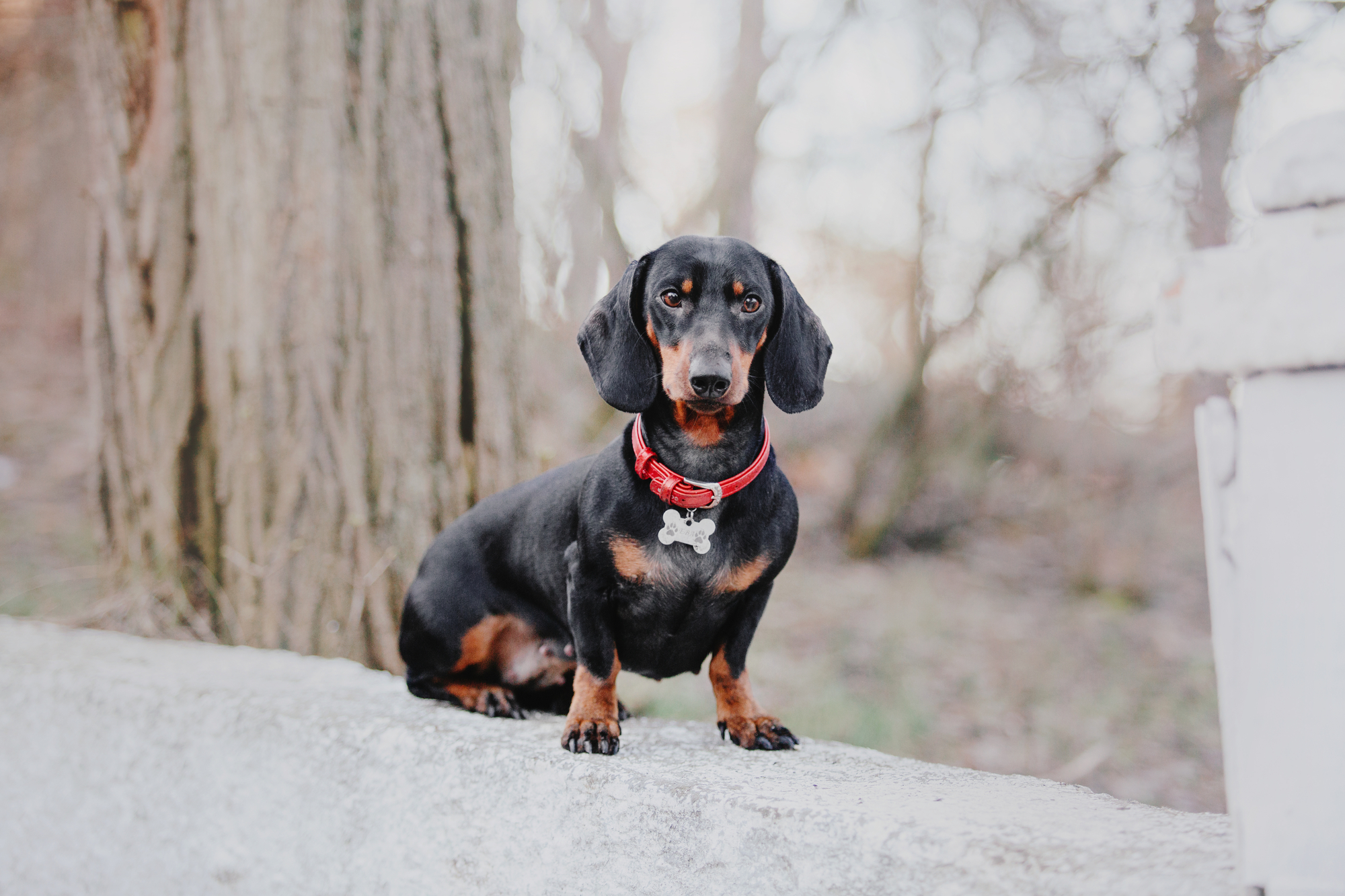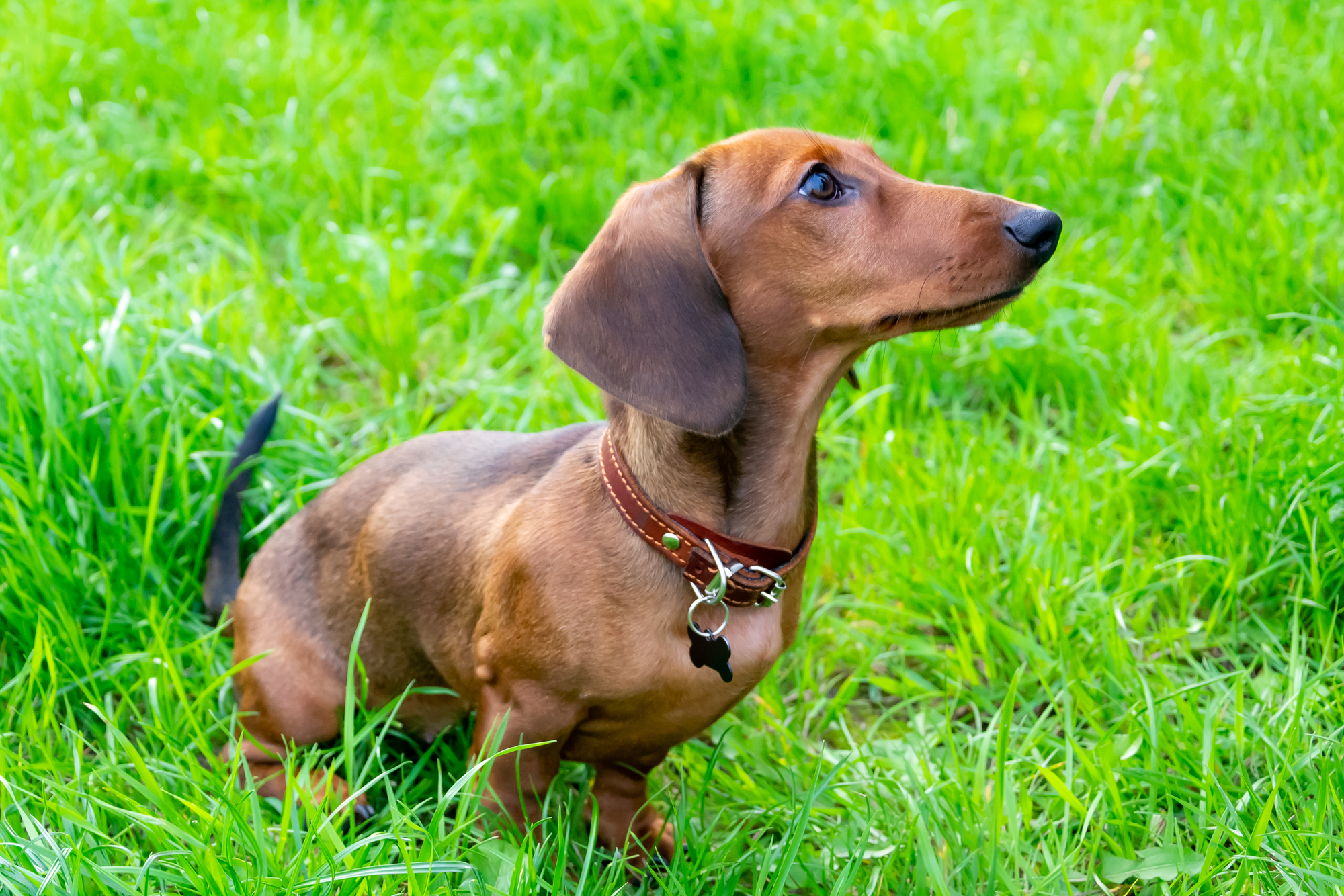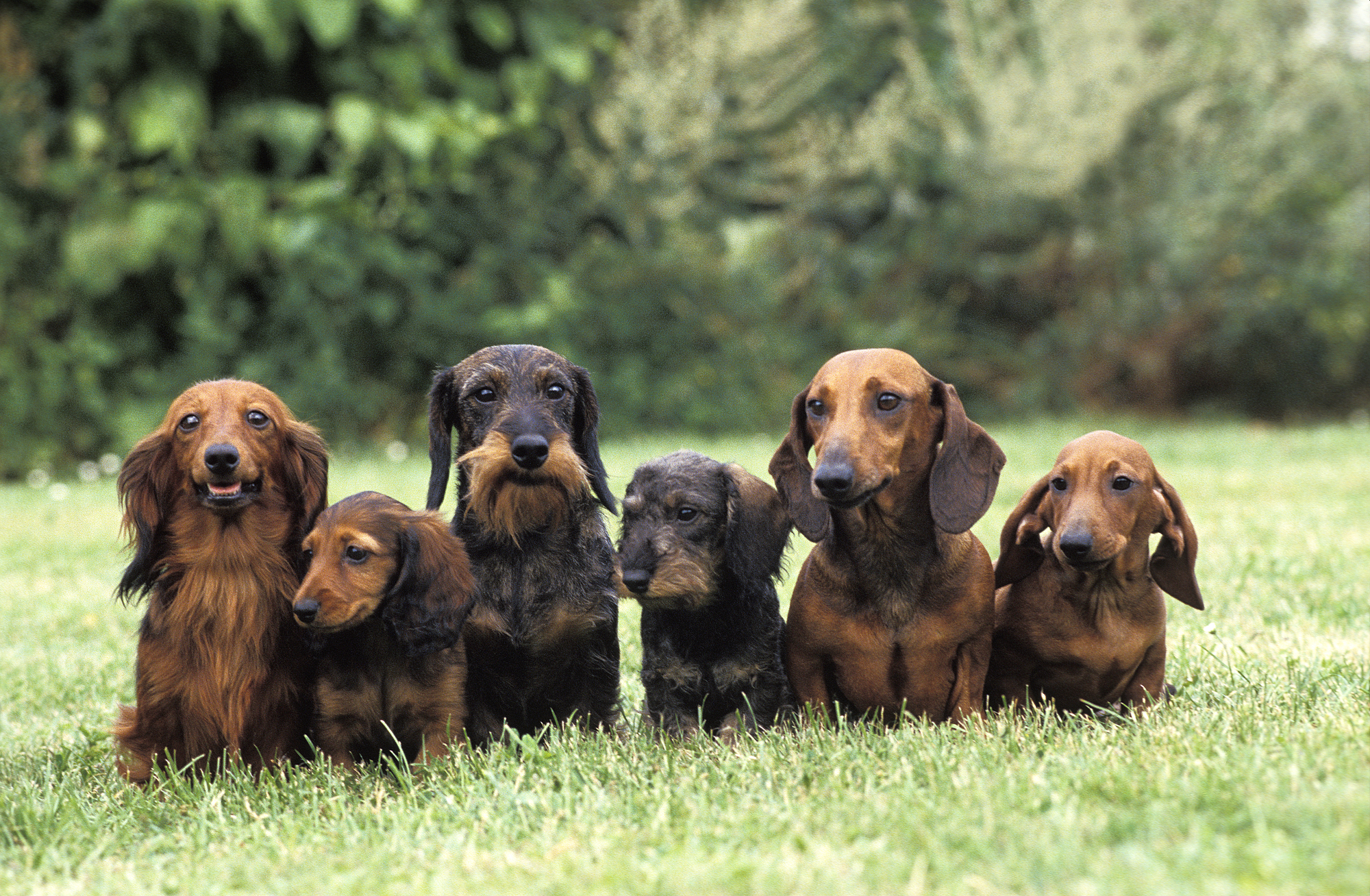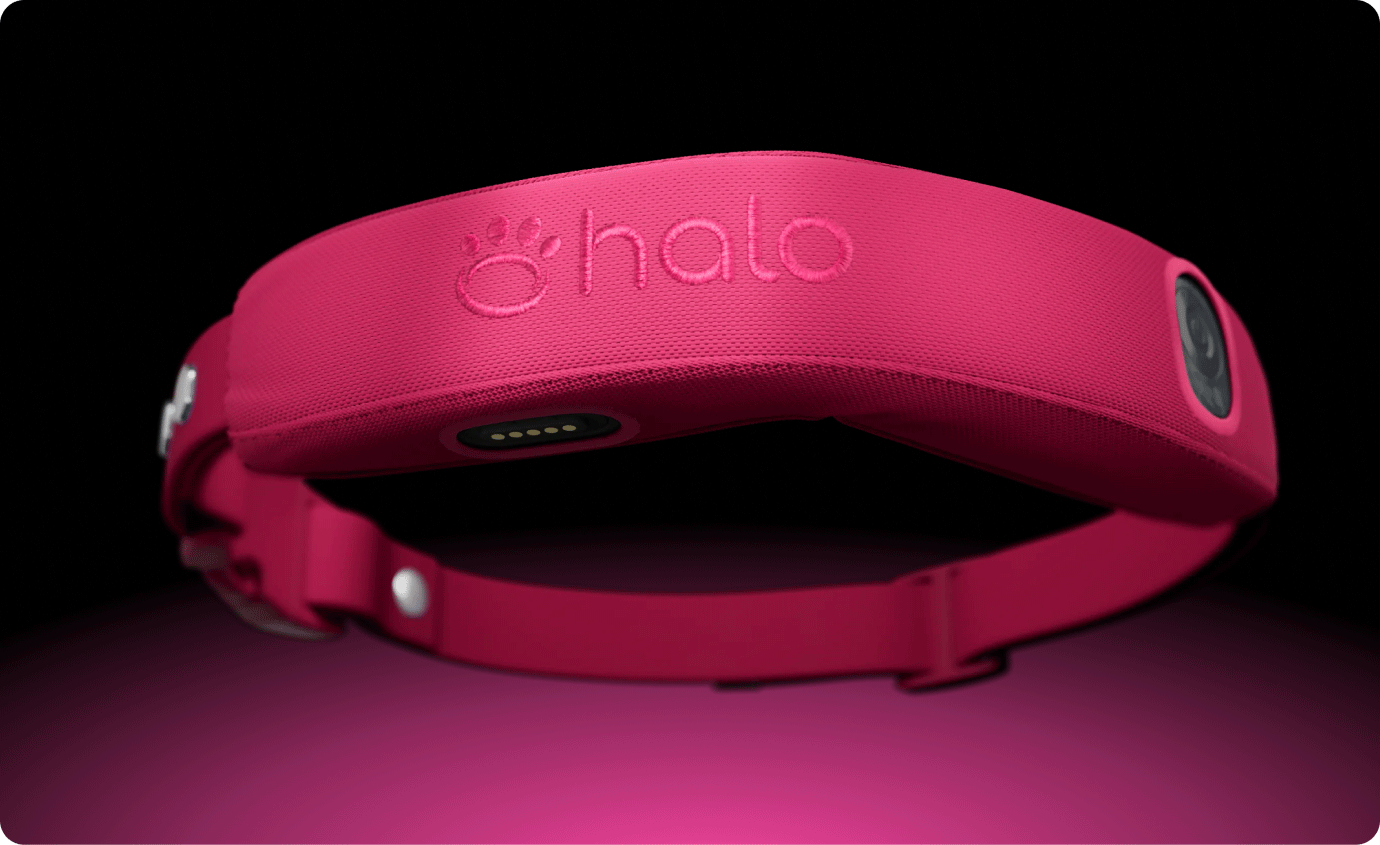Your Cart

Halo is backed by a 90-day satisfaction guarantee
Subtotal$0
Tax & Shipping Calculated at checkout
Total $0
Dachshunds are one of the more popular breeds of dogs, often mentioned in the top 10, and recognizable by their short legs and long body. Due to their unique look, dachshunds have earned a number of amusing nicknames, from doxie and low rider to the classic wiener dog.
Dachshunds come with a lot of spunk for their size, but the breed is also friendly, intelligent and eager to bond with people. Dachshund owners love to promote their dogs and the breed, sharing videos and pictures enthusiastically.
This guide offers a complete review of the dachshund breed, including the different varieties, the best way to train and groom them and the recommended living environments. You’ll also find answers to frequently asked questions about dachshunds and their habits.
They mostly serve as family pets, although their high intelligence and obedience also make them great therapy or service dogs.

Male: Weight: 16-32 lbs; Height: 8-9 inches
Female: Weight: 16-32 lbs; Height: 8-9 inches
Yes, with a proper introduction
Yes, with a proper introduction
Excellent family pets; young children should be supervised
Easy to train but can be stubborn
Smooth: Minimal shedding, weekly brushing, bathing as needed
Longhaired: Occasional shedding, daily brushing of certain areas, some trimming, bathing as needed
Wirehaired: Occasional shedding, brushing biweekly, stripping of the undercoat twice a year, bathing as needed
12-16 years
Curious, playful, independent, stubborn
Intelligent, affectionate, bold, alert, vocal
Solids: Red and cream
Patterns: Various patterns of red, cream, chocolate, tan, black, and gray (blue)
Adjustable; Fits most dogs

The standard dachshund rarely tops over 9 inches from its shoulder to the ground, carrying its 16 to 32 lbs. throughout its lengthy body. Its chest and forequarters are slightly larger than the back end. Dachshunds have a pointy muzzle and drop ears. Their almond-shaped eyes will watch you intently.
Female and male dachshunds are similar in size and shape. Both come in three coat varieties — smooth, longhaired and wirehaired — and an assortment of colors and patterns. Solid dachshunds are typically red or cream. Piebald, dappled, bicolor and tricolor dachshunds can contain tan, black, chocolate, red and other pigments.
While dachshunds are eager to please, they have a stubborn streak that can occasionally derail training. Additionally, their hound senses can take them off course now and then if their nose wins out over your commands. Investing in a wireless GPS dog fence can be a great way to ensure that your dog can follow those instincts without wandering out of your care.
Start training early with puppy classes. This helps socialize your dachshund, getting it used to different types of people, noises and other dogs. Puppy training also teaches you how to be a better pet owner. You’ll learn how to reward good behavior and redirect undesirable activities. Dachshunds respond well to positive training but can be sensitive to harsh scoldings.
Obedience training is the next step after puppy school. Your dachshund will learn a variety of commands to keep it safe and make your home life easier. The more training you share with your dachshund, the closer the bond between you and your pet becomes. Experiment with group and one-on-one classes to find which works best for you and your dog’s personality.
Dachshund owners can choose from several advanced training opportunities and competitions. Your pet can earn its therapy certification, making it eligible to visit hospitals and other institutions. Although dachshunds aren’t built for running long distances or jumping, they can compete in agility and rally competitions. You can also enter your dog in dachshund field trials and earth dog tests, which involve scent-tracking and hunting skills.
The grooming needs of a dachshund depend on its coat type. Smooth dachshunds have short hair and a sleek look. These are the easiest doxies to care for, requiring occasional brushing during the week. Use gentle strokes and a soft-bristled brush.
Longhaired dachshunds have a smooth, short coat over the head and across the back. The ears, legs, tail and sides of the body have longer, wavy hair. Plan to remove tangles and knots daily to avoid matting. Regular trimming can help keep longer hair looking neat. You can learn to trim the hair yourself or take your pet to a groomer.
Wirehaired dachshunds have two types of coats: a thick undercoat and a topcoat, which is typically coarse. Biweekly brushing can help keep the coat clean and healthy. You must strip the excess dead and loose hair twice a year, providing space for new healthy growth. You can trim your wirehaired dachshund as needed to keep it neat. Some wirehaired varieties have a softer outercoat.
Regardless of the coat type, your dachshund only needs bathing every 3 months or so. A dachshund’s hair follicles secrete a protective coating called sebum. Over-bathing can remove this secretion, causing the skin to dry out and be more susceptible to infections.
These sturdy dogs shed little, especially the wirehaired and smooth varieties. Your longhaired dachshund may shed slightly more with seasonal molting in the spring and fall. Plan to trim your pet’s nails every 2 to 3 weeks, depending on the growth rate. It’s easier to keep nails in check with regular trimming of small amounts rather than periodic large cuttings.
To help your dachshund live out its life in good health, develop positive habits and visit a veterinarian regularly. Their short stature makes dachshunds prone to weight problems; avoid overfeeding and too many snacks.
Dogs with drop ears, like dachshunds, are prone to ear infections, so keep water out of the ears during baths and dry the ear area carefully. The Dachshund Club of America recommends evaluating all young dachshunds for patella luxation (kneecap movement), eye disorders and cardiac function.
The primary health risk for dachshunds is spinal disc injury and disease. Intervertebral disk disease (IVDD) causes the discs between vertebrae to break down prematurely. Your best defense against back problems in your dachshund is prevention.
Finally, provide all recommended vaccinations and schedule an annual wellness checkup. Most adult dogs should see a veterinarian once a year. Puppies and senior dogs may need to visit more frequently.
Your veterinarian will check your dachshund’s teeth and gums, but you should also provide regular dental care at home. Brushing helps remove plaque, which can lead to gum disease, tooth loss and bad breath. Dog toothbrushes and flavored toothpaste can help make this grooming habit a positive experience. Dog chews can also help remove tartar; make sure you buy the recommended product for your dachshund’s size and watch over it while chewing.

Most adult dachshunds eat twice per day, with puppies needing food more frequently, usually three times a day. Offer nutritional pet food in the amount and frequency recommended by the manufacturer for your pet’s age and size. Since dachshunds can vary so dramatically in size, follow the feeding guidelines, factoring in current weight, height and activity level.
Puppies generally need more calories than older dogs, so in the beginning, look for a specialty puppy kibble. Your dachshund may reach senior status between 8 and 10 years of age. At that time, you may want to switch to a dog food for seniors that provides a different mix of nutrients.
While your dachshund may give an Oscar-winning performance when it comes to begging for food, stay strong. Avoid unhealthy scraps, especially high-fat foods and cooked bones, which can splinter. If your dachshund eats too quickly and begs for more, consider a slow-feeding bowl to help mealtime last a little longer.
Your veterinarian may suggest low-calorie treats for training, reduced portions or a variety of diet kibble if your dog puts on excess weight. Since dachshunds have a keen sense of smell and exceptional tracking ability, keep food out of their reach.
Dachshunds were originally bred to hunt badgers, and that same spunkiness and desire to chase remains in the breed today. Fortunately, you can encourage physical exercise and mental stimulation without resorting to field sports. Twice-daily walks allow you both to enjoy the outdoors while bonding. However, remember the short legs of your companion when setting a walking pace.
Dachshunds prefer to be with their humans, so find activities you can do together. Many stores allow well-behaved pets, providing a great way to encourage socialization.
Doxie puppies don’t need quite as much exercise. Playing around the house and yard and taking short, 5-minute walks are good starting points. You can gradually increase the walk length as your dog matures.
You may find your dachshunds love digging under blankets for toys and treats and playing with squeaky chews. Experiment with interactive toys or treat dispensers to help relieve boredom and keep your dachshund’s quick mind occupied. Visiting dog parks also helps provide social interaction along with mental stimulation. Finally, make training a lifetime commitment. It’s an easy way to strengthen your bond with your pet and helps keep them mentally fit.
Take all the pluckiness and curiosity of a standard dachshund and squeeze it into an 11 lb. or less wriggling package and you have the makings of a miniature dachshund. While their larger cousins hunted badgers, these tiny warriors were sent after rabbits. Nowadays, miniature dachshunds are perfect for families looking for a small dog with a big personality.
Miniature dachshunds have the same disposition, coat varieties and color choices as the standards. Grooming habits are similar. They also have the same health risks regarding obesity and back problems.
Size-wise, miniature doxies weigh less than 11 pounds and have an average height of 5-6 inches. You may occasionally hear the term tweenie used for dachshunds that fall short of the standard size but are too big to be considered miniatures.
Miniature dachshunds need regular exercise and mental stimulation as much as their big cousins. However, keep walks within their physical limits. Children may find miniature dachshunds irresistible and, if not properly supervised, can injure a tiny dog by dropping them or pressing on their backs.

If you’re thinking of sharing your life with a dachshund, you can expect a one-of-a-kind experience. What the dachshund lacks in height it more than makes up for in personality and looks. Don’t be surprised at the number of people commenting or wanting to meet your four-legged friend when you go out.
Dachshunds can happily thrive in a variety of living situations, from single owners to families with children and seniors. Doxies love to tunnel, whether through a pile of blankets on the couch or underneath your flower bed, so keep a close watch for holes along fencing. Wireless fencing can help keep your dachshund safe while allowing access to yard space.
Dachshunds make good watchdogs. Thanks to their alertness and big-dog bark, they’ll let you know if someone new is in the area. Since they love to be with their people, you’ll always have a companion, whether working on your computer, gardening or going to the store.
Another great thing about dachshunds is their variety. If you want a small dog with minimal exercise and grooming needs, a smooth miniature dachshund could be your ideal companion. And if you want silky hair, minimal shedding and a big dog bark, consider a longhaired standard dachshund. You’re sure to love whichever dachshund variety you choose.
Dachshunds are friendly dogs and, if socialized as young puppies, enjoy playing and living with children. However, young children should be supervised to ensure they know how to act around dogs. Make sure older children are taught how to pick up a dachshund to avoid hurting its back. Be wary of unfamiliar children who may think your dachshund is adorable but don’t know how to behave around a dog.
Walk your dachshund at least twice a day. Aim for about ½ mile for a standard dog and less than that for a miniature. Dachshunds like to be with their people when exercising, although dog park visits are good too for socialization and exercise. You can keep your dachshund safe at the park with a GPS dog fence, allowing them some freedom to play and be a dog, while keeping them safe.
The grooming needs of dachshunds vary depending on the coat variety. Smooth dachshunds require the least amount of care with biweekly brushing. Longhaired dachshunds need frequent combing to remove tangles in the hair on the ears, sides and tail. They also benefit from regular trimming. Wirehaired varieties should have their coat stripped at least twice a year and be brushed periodically. Limit bathing to three or four times a year for all three types.
Although the dachshund is intelligent and eager to please, it comes with a stubborn, independent streak. Dachshunds may first weigh the benefits of pleasing you versus doing their own thing. Therefore, you may have to strategize ways to get your dachshund to cooperate — and that includes housebreaking. That said, if you can get them interested in an activity, they can excel at it. For best results, use positive reinforcement training methods.
Dachshunds are susceptible to back problems due to their long torsos and short legs. Avoid injuries by handling your dog correctly and limiting jumping. Carrying extra belly weight puts stress on the spine, so keep your dachshund at its recommended weight.
Have your dachshund puppy checked for patella luxation, eye disorders and heart conditions. Once your dog has been vaccinated and given the all-clear, continue to see your veterinarian once a year to detect and prevent health problems.
Dachshunds live approximately 12 to 16 years, with miniatures usually living slightly longer than standards. You can help your dog live a long, healthy life by offering nutrient-rich food, keeping its weight at a safe level and providing plenty of exercise.
If socialized properly as a puppy, dachshunds should enjoy being part of a family with dogs and cats. Their hunting instincts make them unlikely companions for rabbits and smaller pets. Each dog is unique, so take the time to carefully oversee introductions to new family members, whether a dog or cat.
The size of dachshunds makes them ideal companions for people in urban, rural or suburban settings. They can live happily in a small apartment with frequent walks or romp through the countryside on a farm. Since the doxie likes being with its people, it doesn’t need a dedicated outdoor space to run and play. Because its nose can lead a dachshund astray, you should have a physical or wireless fence to prevent accidental loss or injury.
Dachshunds have much to offer new dog owners, with their friendly personalities and desire to be with you. Their need for minimal exercise is also a plus, letting you both experience fresh air without requiring hours of rambling. Their ease of grooming and minimal shedding also helps endear dachshunds to new dog owners.
You may have some frustrations during training, wondering who’s training whom, but there’s a reason dachshunds are among the most popular breeds: Their owners love them. Finally, the dachshunds’ short stature may make them more approachable to new owners who may be nervous or unsure around dogs.
When deciding on a dog food, you must consider several factors. First, you want a product that supplies the proper nutrients without excess fillers, fats or sugars. Puppies and senior dogs have different nutritional needs and may require a specialty formula. Miniature dachshunds need a small-breed kibble so they can safely chew it.
You also want a competitively priced dog food that’s convenient to store and prepare. Some people prefer dry kibble, while others like wet preparations. Start your search by talking to your veterinarian. They can provide initial recommendations.
Once you’ve found a dog food, read the label for feeding guidelines. Most feeding recommendations are based on the age and weight of your dog. It can be tempting to overfeed a dachshund because it desires more food than you give it. If your dachshund always seems hungry, talk to your veterinarian for tips on keeping your pet satisfied while controlling portions.

As a loving pet owner, you want to give your Dachshund the best life possible. Halo Collar is a wireless GPS fence with a convenient phone app that allows you to set up a safe perimeter for your dog at home, on walks, or anywhere you take your pup. It also acts as an activity tracker and training aid for your Greyhound, providing several convenient benefits in one. Shop for your Halo Collar today.

Halo is backed by a 90-day satisfaction guarantee
Subtotal$0
Tax & Shipping Calculated at checkout
Total $0